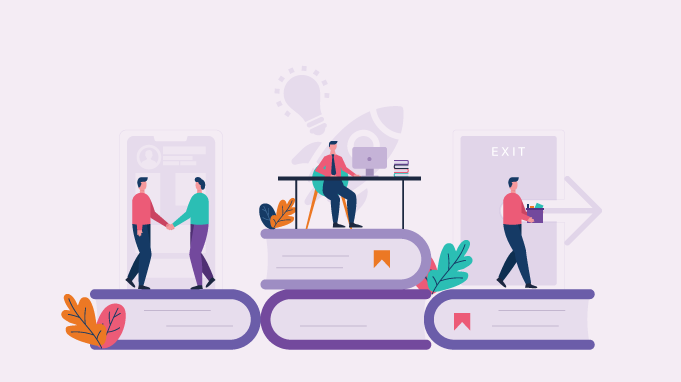In an era where technology permeates every aspect of our lives, its role in shaping the employee experience is more crucial than ever. Organizations that leverage technology effectively can create a more engaging, efficient, and satisfying work environment. Here are ten ways to use technology to improve employee experience and drive business success.
1. Streamline Communication with Collaboration Tools
Effective communication is at the heart of a positive employee experience. Collaboration tools like Slack, Microsoft Teams, and Zoom enable seamless communication across teams, departments, and locations. These platforms offer real-time messaging, video conferencing, and file sharing, making it easier for employees to stay connected and collaborate efficiently, whether they’re working in the office or remotely.
Benefits:
-
Enhanced collaboration and teamwork
-
Reduced communication gaps
-
Greater alignment across teams
2. Enhance Onboarding with Virtual Reality (VR)
Onboarding is a critical phase in the employee lifecycle, setting the tone for the entire employee experience. Virtual reality (VR) can transform the onboarding process by offering immersive, interactive training sessions that familiarize new hires with the company culture, processes, and workspace. VR can also simulate real-life scenarios, allowing employees to practice skills in a safe, controlled environment.
Benefits:
-
Faster and more engaging onboarding
-
Better retention of training material
-
Reduced time to productivity
3. Empower Employees with Self-Service HR Portals
Self-service HR portals give employees control over their work experience by allowing them to manage tasks such as requesting time off, updating personal information, and accessing benefits information without needing to go through HR. Platforms like Workday, BambooHR, and Gusto provide employees with easy access to important resources and streamline HR processes.
Benefits:
-
Increased employee autonomy
-
Reduced administrative workload for HR
-
Faster resolution of HR-related tasks
4. Boost Learning and Development with E-Learning Platforms
Continuous learning is essential for employee growth and satisfaction. E-learning platforms like Coursera, LinkedIn Learning, and Udemy for Business offer a wide range of courses that employees can access anytime, anywhere. These platforms allow employees to learn at their own pace, pursue topics of interest, and develop new skills that can benefit both their personal and professional lives.
Benefits:
-
Accessible and flexible learning opportunities
-
Enhanced skill development and career growth
-
Increased employee engagement and motivation
5. Increase Engagement with Employee Feedback Tools
Collecting and acting on employee feedback is crucial for improving the employee experience. Tools like SurveyMonkey, Qualtrics, and Officevibe allow organizations to gather real-time feedback through surveys, polls, and pulse checks. These insights help companies understand employee needs, identify areas for improvement, and implement changes that enhance the overall work experience.
Benefits:
-
Better understanding of employee sentiment
-
Informed decision-making based on data
-
Improved employee satisfaction and retention
6. Simplify Workflow Management with Project Management Software
Managing tasks, deadlines, and resources can be challenging, especially in a fast-paced work environment. Project management software like Asana, Trello, and Monday.com helps employees stay organized, prioritize tasks, and track progress. These tools provide visibility into project timelines, responsibilities, and milestones, ensuring that everyone is on the same page and can work more efficiently.
Benefits:
-
Increased productivity and efficiency
-
Clearer communication and expectations
-
Reduced stress and burnout
7. Improve Employee Well-Being with Wellness Apps
Employee well-being is a key component of the employee experience. Wellness apps like Calm, Headspace, and MyFitnessPal offer resources for mental and physical health, including meditation guides, fitness tracking, and sleep monitoring. By integrating these apps into the workplace, organizations can support employee well-being and promote a healthier, more balanced lifestyle.
Benefits:
-
Improved mental and physical health
-
Increased resilience and stress management
-
Enhanced overall employee satisfaction
8. Facilitate Remote Work with Cloud-Based Solutions
The shift to remote work has highlighted the importance of cloud-based solutions in maintaining a seamless employee experience. Tools like Google Workspace, Microsoft 365, and Dropbox allow employees to access files, collaborate on documents, and communicate with colleagues from anywhere with an internet connection. These solutions ensure that employees have the flexibility to work remotely without sacrificing productivity or connectivity.
Benefits:
-
Greater flexibility and work-life balance
-
Continuity of work regardless of location
-
Improved collaboration across distributed teams
9. Recognize Achievements with Digital Recognition Platforms
Recognition plays a significant role in boosting employee morale and engagement. Digital recognition platforms like Bonusly, Kudos, and Recognize allow peers and managers to acknowledge and celebrate employee achievements in real-time. These platforms can be integrated with existing communication tools, making it easy for employees to give and receive recognition, fostering a culture of appreciation.
Benefits:
-
Increased employee motivation and engagement
-
Reinforced positive behaviors and achievements
-
Stronger team cohesion and morale
10. Enhance Performance Management with AI-Driven Analytics
Performance management is more effective when it’s data-driven. AI-driven analytics platforms like Lattice, 15Five, and Culture Amp provide insights into employee performance, engagement, and development needs. These tools help managers make informed decisions about promotions, training, and resource allocation, ensuring that employees are supported in their growth and development.
Benefits:
-
Data-driven performance evaluations
-
Personalized development plans
-
Increased employee retention and growth
Conclusion
Incorporating technology into the employee experience is no longer optional—it’s a strategic necessity for organizations aiming to create a modern, engaging, and productive workplace. By leveraging the right tools and platforms, companies can enhance communication, streamline processes, and support employee well-being, ultimately leading to a more satisfied and motivated workforce. As technology continues to evolve, staying ahead of the curve and continuously adapting to the needs of your employees will be key to long-term success.
